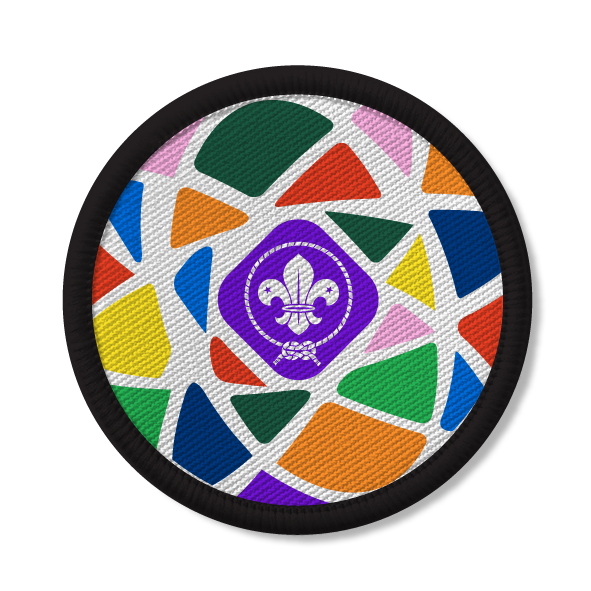
Community birdhouses
You’ll need
- Equipment depends on chosen birdhouse (see options below)
- Stepladder
Before you begin
- Use the safety checklist to help you plan and risk assess your activity. Additional help to carry out your risk assessment, including examples can be found here. Don’t forget to make sure all young people and adults involved in the activity know how to take part safely.
- Make sure you’ll have enough adult helpers. You may need some parents and carers to help if you’re short on helpers
Chat about biodiversity
- Everyone should try to remember what biodiversity means.
You might remember that WWF talk about biodiversity as the ‘magic ingredient that enables the world to work smoothly’. People could talk about how different plants and animals work together in an environment.
- The person leading the activity should choose one of the example ecosystems from Web of life (insert link once uploaded).
- Everyone should name as many plants and animals in that ecosystem as they can. Can they name one thing they might eat or be eaten by?
Birdwatch walk
Choose somewhere to go for a walk in your local area. How many different birds can you spot? Are there any birdhouses or can you see any nests? Are there any good spots to put your birdhouses?
This garden bird spotting sheet from the Woodland Trust might be useful.
Build your bird houses
There are lots of different ways to make great birdhouses depending on the materials and space you have available. Choose from one of the options below to build your very own.
- Get a one litre juice carton, open the top, and clean and dry it thoroughly.
- Use scissors to puncture the carton and cut a 3–4 cm hole on the front, around 10–12 cm from the bottom. Use something like an apple or potato behind the carton when you puncture it to catch the scissors and keep your fingers clear.
- Decorate the carton however you like. Camouflaging it into the environment it’s going to be in can help keep the birds safe.
- To mount your birdhouse, reach inside the open top open and nail it to its final spot.
- Sealing up the top with tape.
You will need
- 1 litre juice carton
- Scissors
- Sticky tape
- Hammer and nails (to mount the birdhouse)
- Get a second-hand teapot and clean it really well.
- Cut out a sheet of wood so it is around 10 cm larger than the teapot on all sides.
- Glue the base of the teapot to the wood so when the wood is stood up the teapot is vertical on the board.
- To mount the birdhouse, just nail through the board into the spot where you want the birdhouse.
You will need
- Second-hand teapot
- Sheet of wood
- Wood saw
- Hot glue
- Hammer and nails (to mount the birdhouse)
- Choose a dry log to hollow out and be your birdhouse.
- Cut two discs, around two centimetres thick, from the log to be the top and bottom of the birdhouse.
- Cut the remaining log to the final height of your birdhouse.
- Hollow out the log, leaving the walls around two centimetres thick. Do this by drilling lots of holes through the log and chipping the wood out with mallet and chisel.
- Drill a 3–4 cm hole on one side of the log, around 10–12 cm from the bottom.
- Attach the bottom of the birdhouse back to the log with a few nails. Be careful and put them in the right place so they don’t stick into the birdhouse.
- To mount your birdhouse, attach a small strip of wood, around the size of a 15 cm ruler, to the back of the birdhouse at 90 degrees to the log with a couple of nails. Then use this strip of wood to mount the birdhouse in your chosen spot.
You will need
- Logs
- Drill
- Chisel
- Mallet
- Wood saw
- Hammer
- Nails
- Small strips of wood (around 15 cm by 5 cm)
If you’re up for a challenge, try crafting a wooden birdhouse. To do this accurately you’ll need some great instructions, complete with measurements and diagrams. We recommend using the RSPB’s ‘Build a bird box’ guide.
You will need
- Plank of wood
- Tape measure
- Pencil
- Saw
- Nails
- Hammer
- Drill
- Screws
Make a house a home
- Once everyone’s built their fantastic new birdhouses, they should head back out to where they want to place them and choose a spot between two and four metres above the ground on a tree, wall, or fence.
It’s best if your bird house faces roughly north east to avoid the strongest sun and rain (unless there are trees or building to shade it). Make sure that the area in front of the house is clear for the birds to fly in.
- Everyone should mount their birdhouses as described in the instructions.
If you need to use a stepladder, make sure it’s secure and supported by someone on the ground, and make sure that you’re supervised by a responsible adult.
Bird watching
- After a few weeks, everyone should head back out to their birdhouses.
- Everyone should quietly wait and watch to see if anyone’s moved into their creations.
Don’t get too close to the birdhouses or disturb them as you might scare off the feathered tenants.
Reflection
This activity helped people to take a look around their natural environment and see what they can do to help the local birds. Why do birds need people’s help? As people build more and more buildings and roads, they get rid of more of the birds’ natural habitats – it’s important that people do what they can to help he birds. What else can people do to help support their local environment and wildlife?
Safety
All activities must be safely managed. You must complete a thorough risk assessment and take appropriate steps to reduce risk. Use the safety checklist to help you plan and risk assess your activity. Always get approval for the activity, and have suitable supervision and an InTouch process.
- Sharp objects
Teach young people how to use sharp objects safely. Supervise them appropriately throughout. Store all sharp objects securely, out of the reach of young people.
- Hand and electric tools
Inspect tools for any damage before each use. An adult should supervise people using tools, and people should follow instructions on how to use them correctly and safely. Tools should be properly maintained and kept sharp.
Use an appropriate surface and make sure materials are stable and supported when you’re working on them. You should cut and drill away from the body and in an area clear of other people. Be extra cautious of trailing cables and water when using electric tools. Always use a cordless tool if one’s available.
- Scissors
Supervise young people appropriately when they’re using scissors. Store all sharp objects securely, out of the reach of young people.
- Hot tools
Tools, such as irons and glue guns, produce a lot of heat. Never touch the hot metal parts. Use them under adult supervision and on a suitable surface, protecting it if necessary. Never leave hot tools unattended and be careful near combustible materials such as wood, textiles, or paper. Make sure there’s a fire extinguisher and a first aid kit (with items to treat burns) nearby. Always follow the manufacturer’s instructions for proper use. You may need to use gloves and safety goggles with glue guns.
- Choose which birdhouse design you’ll make carefully as some are much easier than others.
- You could also buy one or two birdhouses for people to decorate and place, instead of making them.
Make it accessible
All Scout activities should be inclusive and accessible.
Quietly and carefully revisit your birdhouse every few weeks to see what you can spot. Take a note (or photos) of any birds you spot. Can you identify what type of birds they are?



